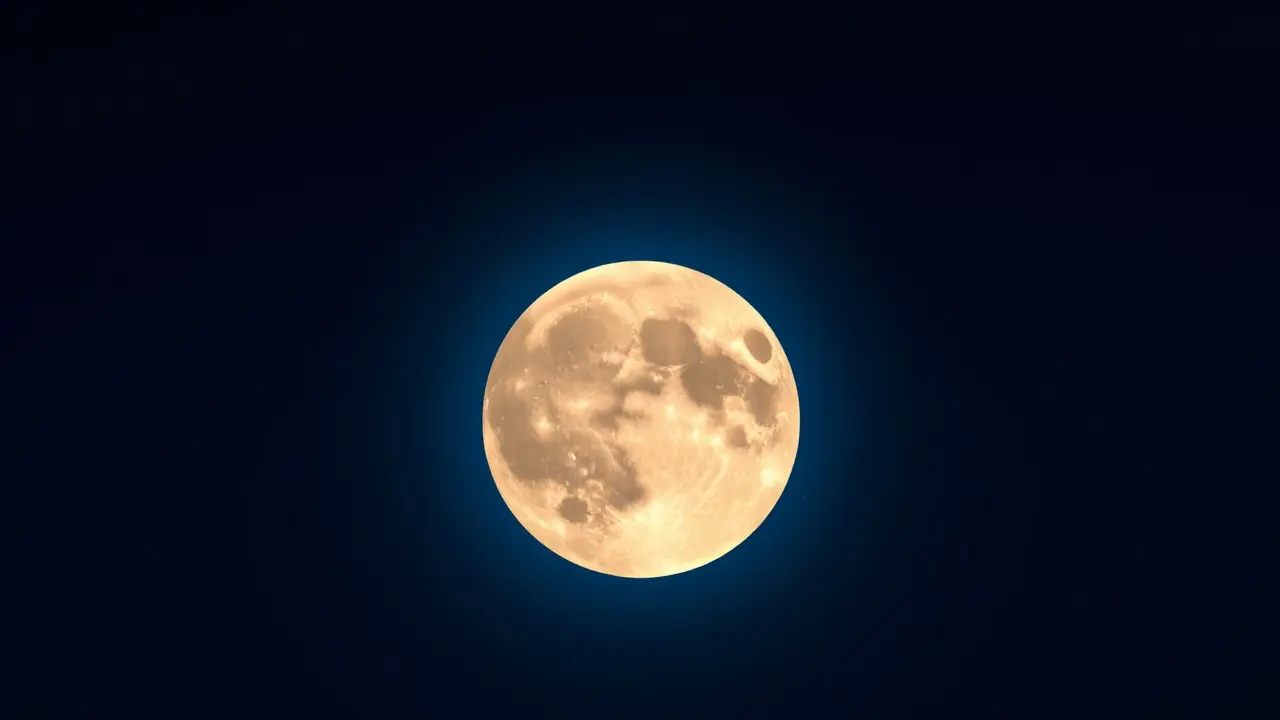
Hottest
Sciencespace & astronomyMoon and Mars Exploration
Beaver Supermoon of 2025: Biggest and Brightest Full Moon.
TH
Thomas Green
2 days ago7 min read
The celestial stage is set for a performance of truly cosmic proportions, as the Beaver Supermoon of 2025 prepares to make its grand entrance, not merely as another full moon but as the year's undisputed lunar champion in both size and luminosity. Officially reaching its peak illumination at 8:19 a.m. ET on Wednesday, November 5th, as meticulously charted by NASA's orbital mechanics, this isn't just a timestamp on an astronomer's calendar; it's an invitation to witness a fundamental dance of orbital physics made visible.The 'supermoon' phenomenon occurs when a full moon coincides with perigee—the point in its elliptical orbit where it swings closest to our planet, a proximity that can shrink the distance to a mere 225,000-230,000 miles. This intimate approach makes the lunar disc appear up to 14% larger and 30% brighter to the naked eye compared to a full moon at its most distant apogee, a difference as perceptible as swapping a standard television for a grand cinematic screen in the sky.While the technical peak happens in the morning daylight for North America, the true spectacle, as any seasoned sky-watcher knows, unfolds during the 'moon illusion' hours of that evening and into Thursday night, when the Beaver Moon heaves itself above the eastern horizon, its amber-hued bulk distorted by the atmosphere into a breathtaking, seemingly impossible giant. The name itself, 'Beaver Moon', is a gift from the almanacs of colonial and Native American tradition, marking the time of year when beavers become intensely active, securing their lodges with a final fervor before the waterways freeze solid, a terrestrial rhythm mirrored by a celestial one.This event is part of a larger trilogy of supermoons anticipated for the latter part of 2025, but the November display promises to be the most dramatic, a reminder that our silent neighbor is not static but a dynamic world in a constant, graceful tug-of-war with Earth's gravity. For photographers, it's a golden hour that lasts all night; for romantics, it's a beacon of pure, reflected sunlight; and for the scientifically curious, it's a live demonstration of Kepler's laws of planetary motion, a chance to see the invisible lines of gravitational force painted in light across the vault of heaven. So, as dusk falls on November 5th, find a clear vantage point, look east, and prepare for a viewing experience that connects us to the ancient observers who first tracked these cycles and to the modern scientists who can predict them with nanosecond precision—a shared human moment under the biggest and brightest full moon of the year.
#hottest news
#beaver supermoon
#full moon
#november 2025
#nasa
#astronomy
#skywatching
Stay Informed. Act Smarter.
Get weekly highlights, major headlines, and expert insights — then put your knowledge to work in our live prediction markets.
Related News
Comments
It’s quiet here...Start the conversation by leaving the first comment.
© 2025 Outpoll Service LTD. All rights reserved.
